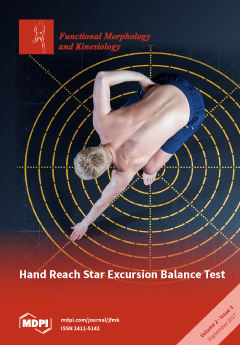A small number of studies have reported that children and adults with haemophilia have impaired balance control and show faster body sway during upright stance than healthy individuals. A decrease of somatosensory information due to multiple bleedings has been suggested to explain this difference. Therefore, the objective of this study was to examine if haemophilia is related to a decreased balance control under altered visual and proprioceptive conditions in male adolescents. Postural sway of healthy (
n = 12, Age = 14.8 ± 1.4 years; BMI = 19.8 ± 1.8 kg/m
2) and haemophiliac (
n = 8, Age = 15.0 ± 1.4 years; BMI = 20.4 ± 3.2 kg/m
2) male adolescents was measured with a force platform for normal quiet stance lasting 30 s with open and closed eyes on hard and foam floor conditions. The ANOVA revealed a significant Group × Vision × Proprioception (F(1,18) = 5.861,
p < 0.05) interaction. Both groups showed an increased centre of pressure (COP) speed when vision and proprioception are challenged. Planned comparisons revealed that the haemophiliac group oscillated at a faster COP speed than the healthy group when vision is altered in hard floor (1.11 ± 0.27 versus 0.76 ± 0.19 cm/s;
p < 0.05) and foam floor (6.83 ± 1.68 versus 4.89 ± 1.05 cm/s;
p < 0.01) conditions. More important, haemophiliac adolescents were more disturbed by the proprioceptive condition and had a significantly higher COP speed on the foam even if vision is available (3.02 ± 0.47 versus 2.34 ± 0.45 cm/s;
p < 0.05) compared to the healthy adolescents. In conclusion, haemophilia clearly affects postural control in altered sensory conditions. Our results suggest that haemophilia has a negative impact on the capacity of male adolescents to adequately use proprioceptive information for posture control.
Full article






